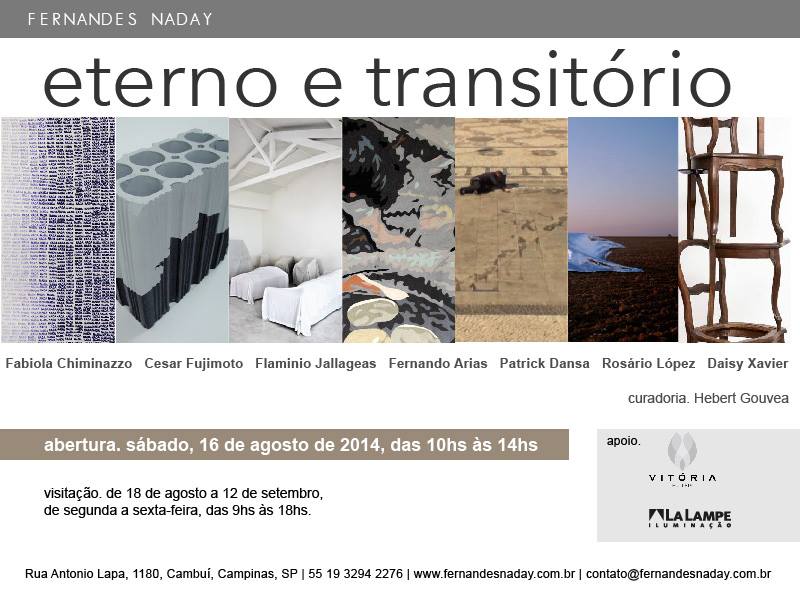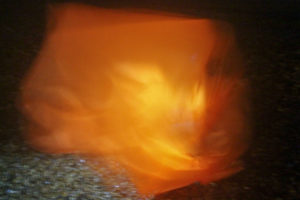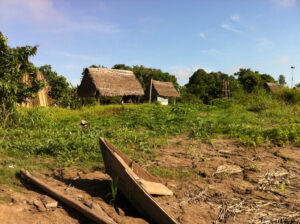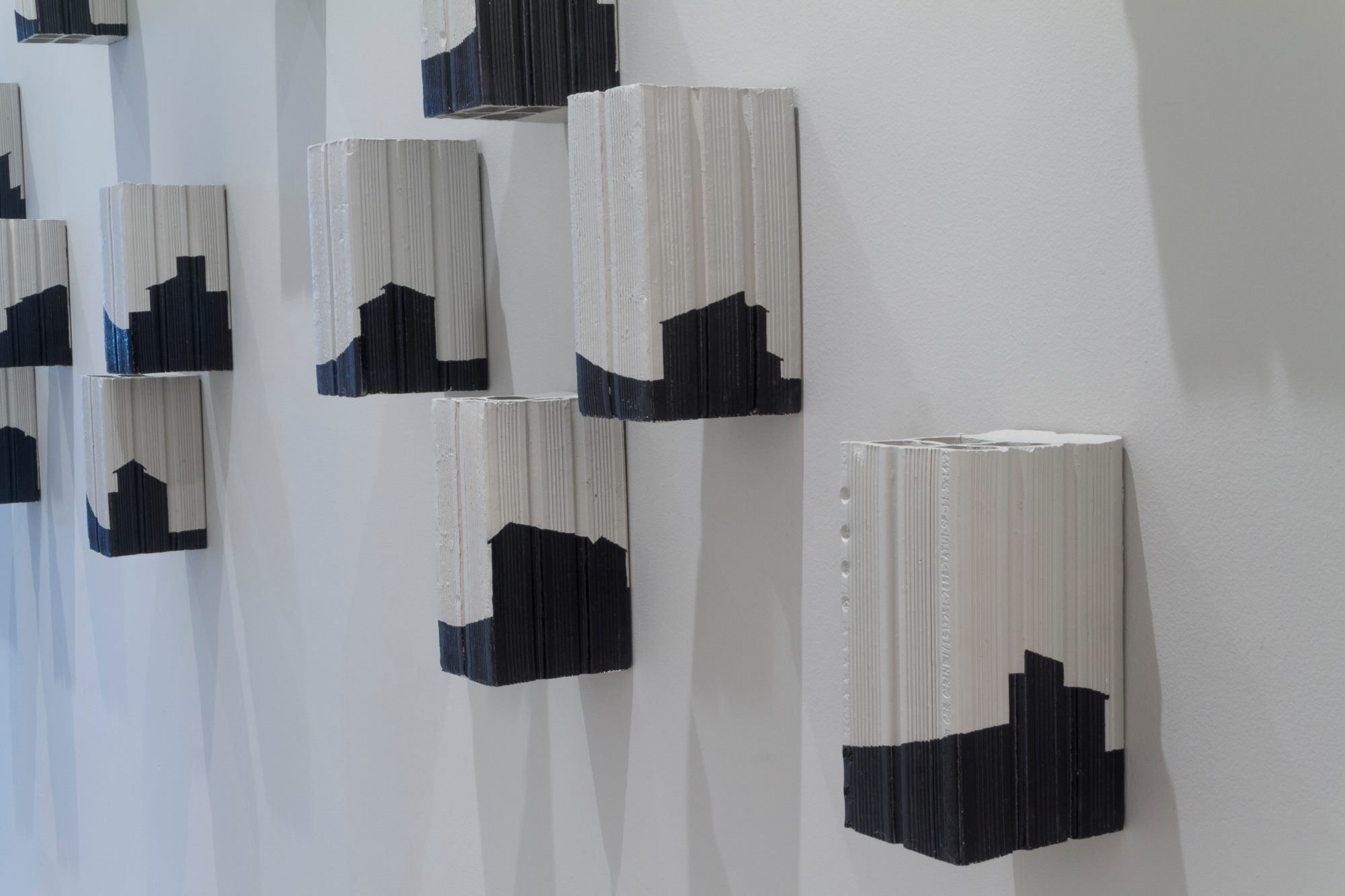
Eternal and Transitory
curatorial project by Hebert Gouvea at Fernandes Naday Contemporary Art
The various artistic languages that make up the works in the exhibition confirm the hybridization of the means employed by these artists in such a way as to configure the symptom intended by the title of the project.
Curated by Hebert Gouvea, the group exhibition “Eternal and Transitory” stems from a reflection on time and space as essential elements in contemporary art production.
For this, the curator borrows a reference from Nicolas Bourriaud, a contemporary French philosopher, who perceives in the current art an exaltation of instability. Extending what this author says, we can delegate to the artist the search for the interpretation of its context and the exercise of activating it with its production. The group of works presented in the Fernandes Naday gallery materializes the presumed dichotomy between the eternal and the transitory through ephemeral fragments captured from the urban environment.
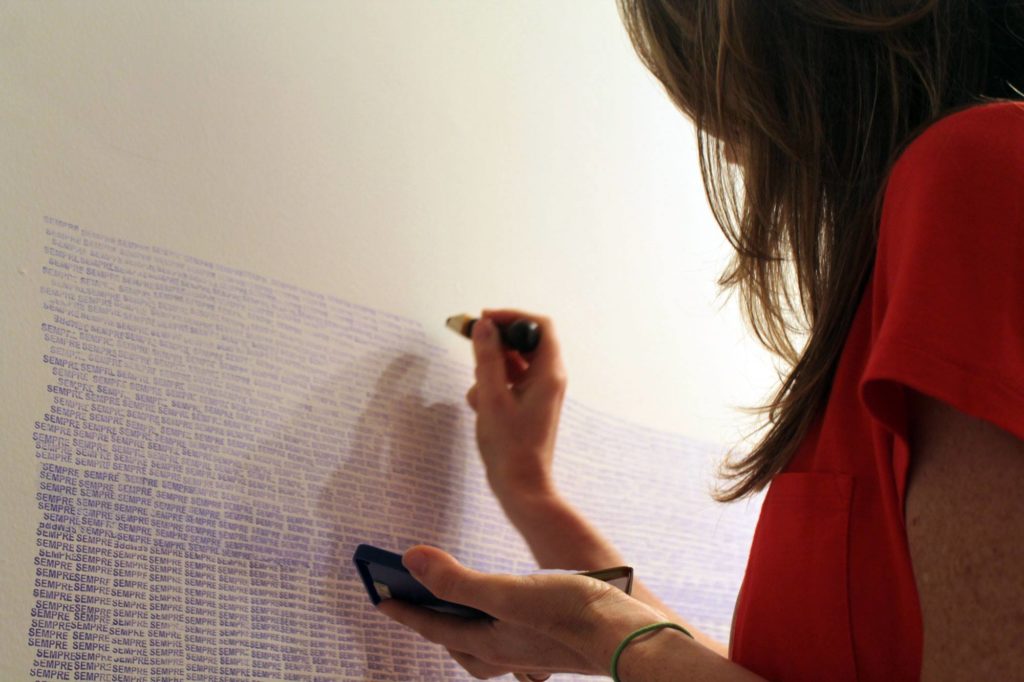
Fabiola Chiminazzo presents drawings elaborated with stamps bearing the words ALL and NOTHING. The final stain requires the viewer to move closer and further away in relation to the works, altering their perception at each moment. Invited to interfere directly on the gallery’s wall, the artist spends a few days intensely experimenting with the question of the present time. Stamping the words “NOW” and “ALWAYS” merged in a long and exhaustive process. For the artist, the now is always.
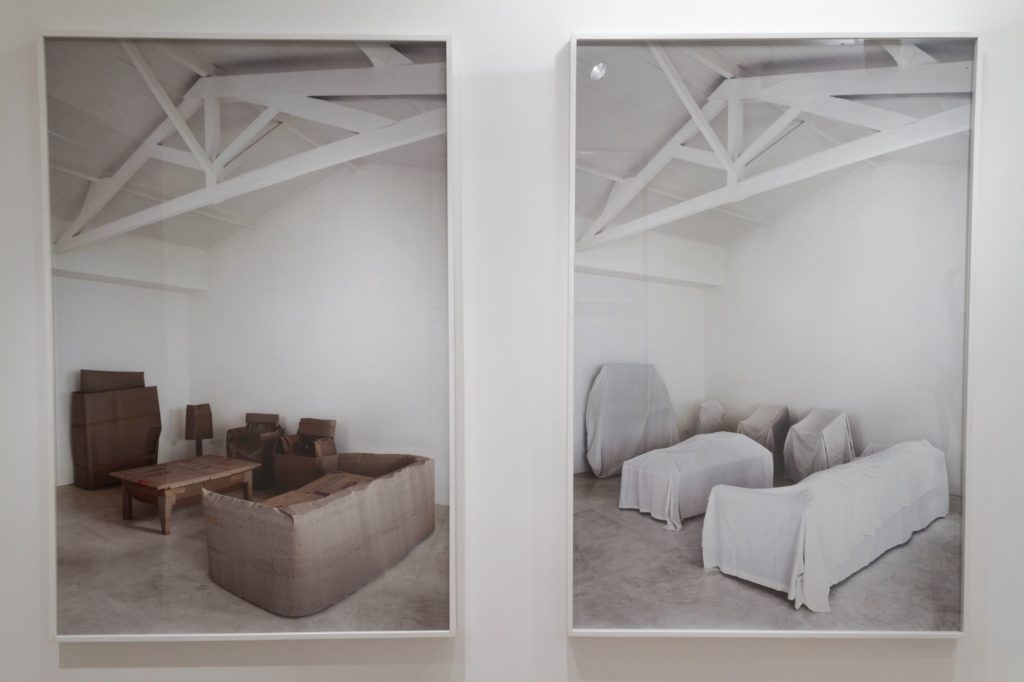
Flaminio Jallageas‘ “State of Conservation” and “State of Change” works precede the moment of image capture. The photographs show the same environment in two distinct moments, differentiated by covering up the furniture that composes it. First, the image shows all the furniture covered with white sheets that allow the identification of its use but prevent the recognition of any information about its style or history. In a second moment, the image has the same objects covered with cardboard, commonly used to transport removals. Here, as in the first image, we are deprived of their form and taken to the evidence of the provisional and transitory character brought by the material. The subtle difference takes us to the sculptural and temporal aspects intrinsic to the image.
Daisy Xavier‘s creative process for the work presented in this exhibition explores altered everyday household objects by piling them up, like a babel tower, layer upon layer. Chairs, plates and glasses overlap in an apparently unstable and precarious manner. At first glance, the use of these materials so familiar to people suggests via aesthetic means an approximation with the spectator, to then cause the strangeness of its assembly and, finally, the perception of its sculptural qualities. The ready-made tactic used since the first experiments of Marcel Duchamp is potentiated by its load of affective memory once these objects are not found or bought at random but are part of the artist’s family collection of furniture.
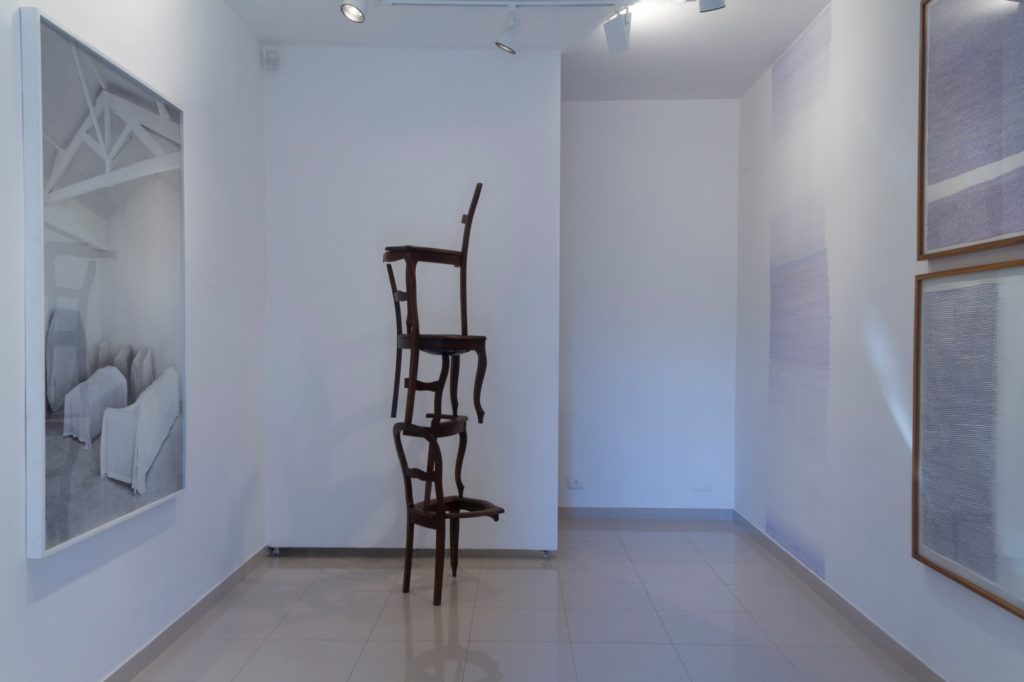
The Colombian artist Rosario Lopez combines her interest in the landscape and the space of the white cube. Through photographic records of a silver cloth in an open field, she presents her desire to make visible the forces of nature’s inclemencies, such as wind and temperature. The instant of the image is only a micro-cut of a scene that we watch like a film.

Cesar Fujimoto builds the art installation “Dream of Home Ownership II” in the gallery space. It is composed of a series of bricks painted with shades of architectural facades in black. The whole set has two dozen pieces installed on the corridor walls connecting the exhibition rooms. The grouping of these pieces suggests a new urban scenario within the exhibition space. At the end of the corridor, installed near the ceiling, the same bricks serve as a platform to materialize the word “DREAM”.
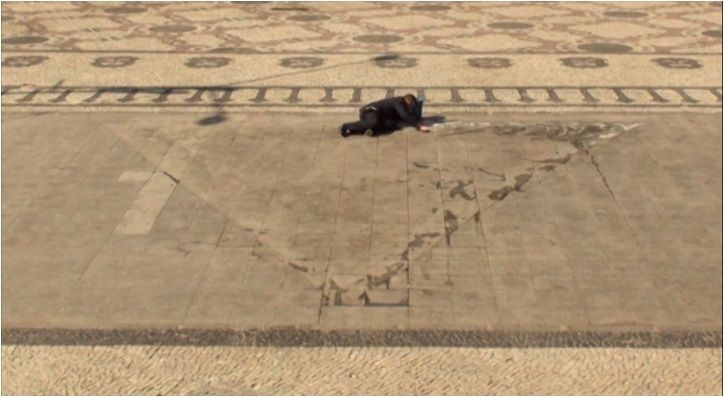
Patrick Dansa, presents a video projection of an urban intervention carried out in Cinelândia square, in Rio de Janeiro, in front of the City Council, on Labor Day 2013. During the eight hours, the artist washes the ground forming a triangle defined by the areas that are dirty and clean. With an apex pointing towards the camera, also where the video’s point of view is, the pyramid is presented as a reference to the structure adopted by both government and religious institutions to define power.
Fernando Arias presents tapestries made by workers in the Kashmir region, renowned for the quality of its fabrics made from local wool. They present images photographed by the artist that portray the daily life of this place’s inhabitants, who live amid a territorial dispute between Pakistan, India and China.
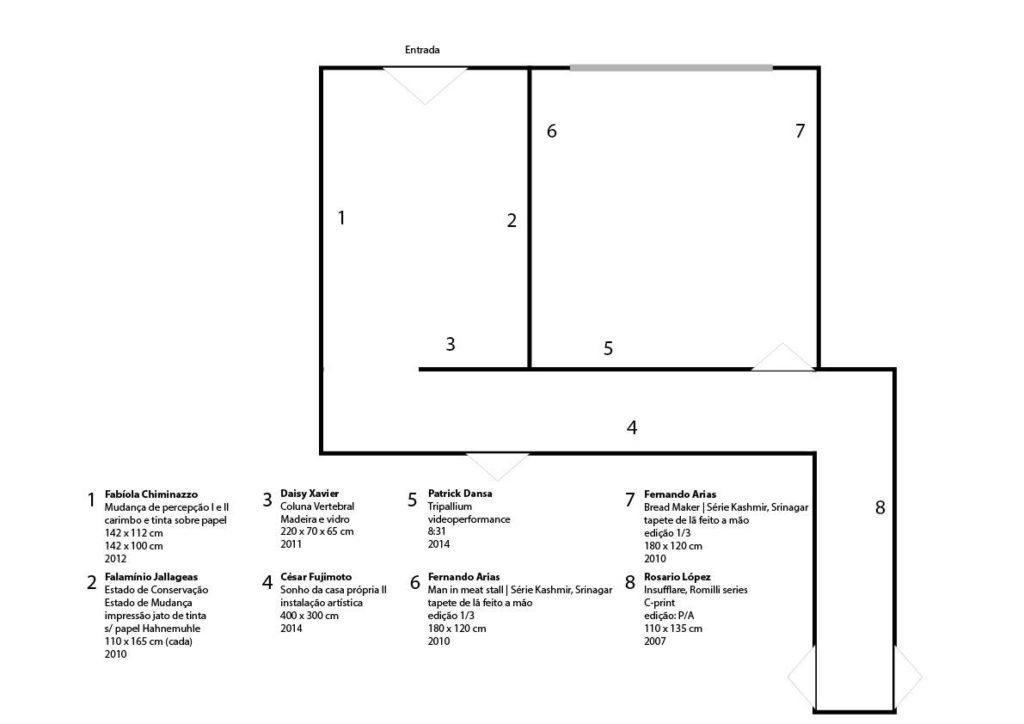
The various languages that make up the works in the exhibition “Eternal and Transitory” confirm the hybridization of the means employed by these artists in such a way as to configure the symptom intended by the title of the project. That brings them together and presents them to identify all that precipitates between what remains and what adjusts itself in contemporaneity.
Hebert Gouvea and Cesar Fujimoto participated in the event “Experiences and Records” organized by Sylvia Furegatti in the form of a panel discussion at the Institute of Arts at Unicamp, on 20 and 27 August 2014.
Participating artists
Cesar Fujimoto (Brazil)
Flaminio Jallageas (Brazil)
Fabiola Chiminazzo (Brazil)
Patrick Dansa (Brazil)
Fernando Arias (Colombia)
Rosario Lopez (Colombia)
Daisy Xavier (Brazil)
